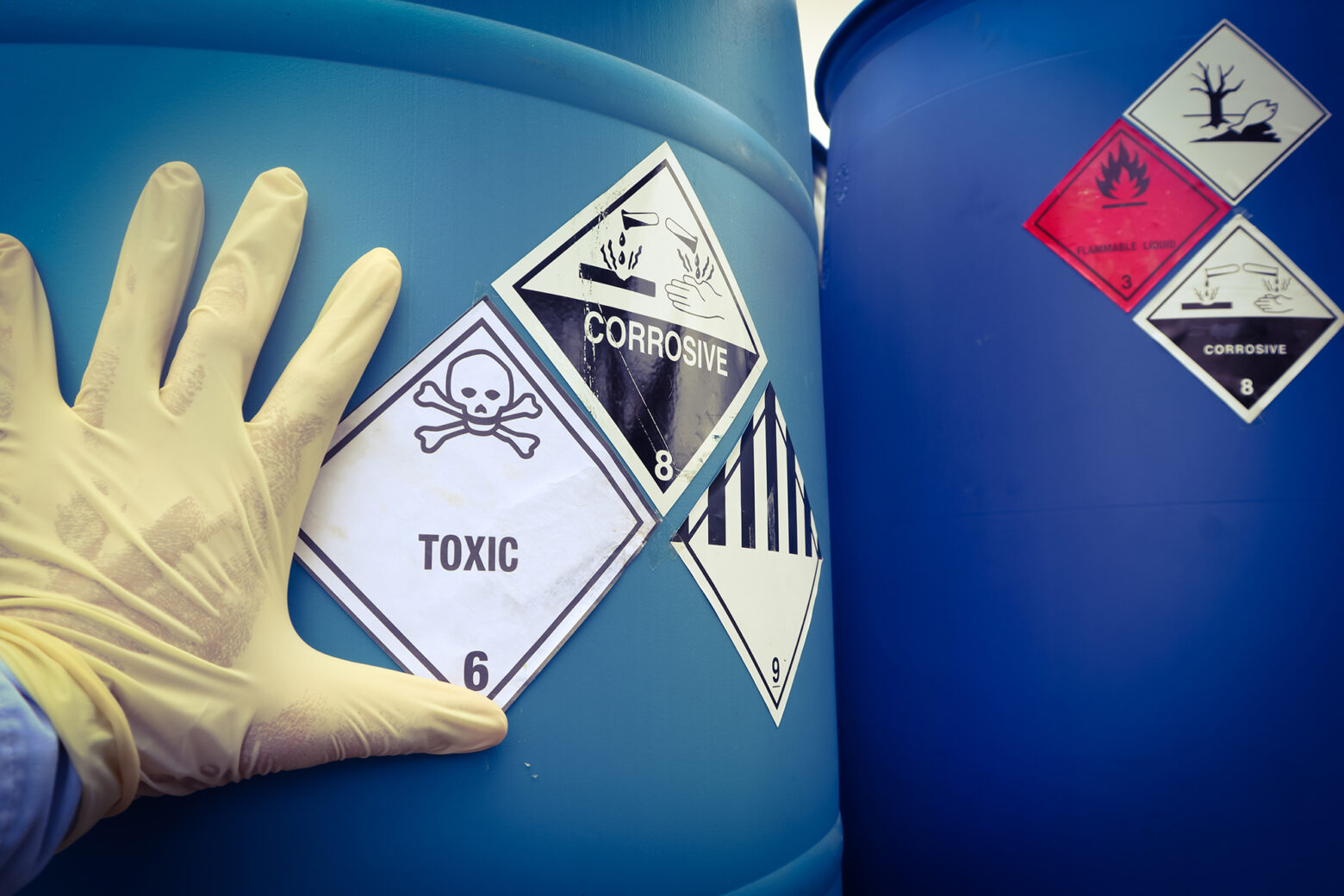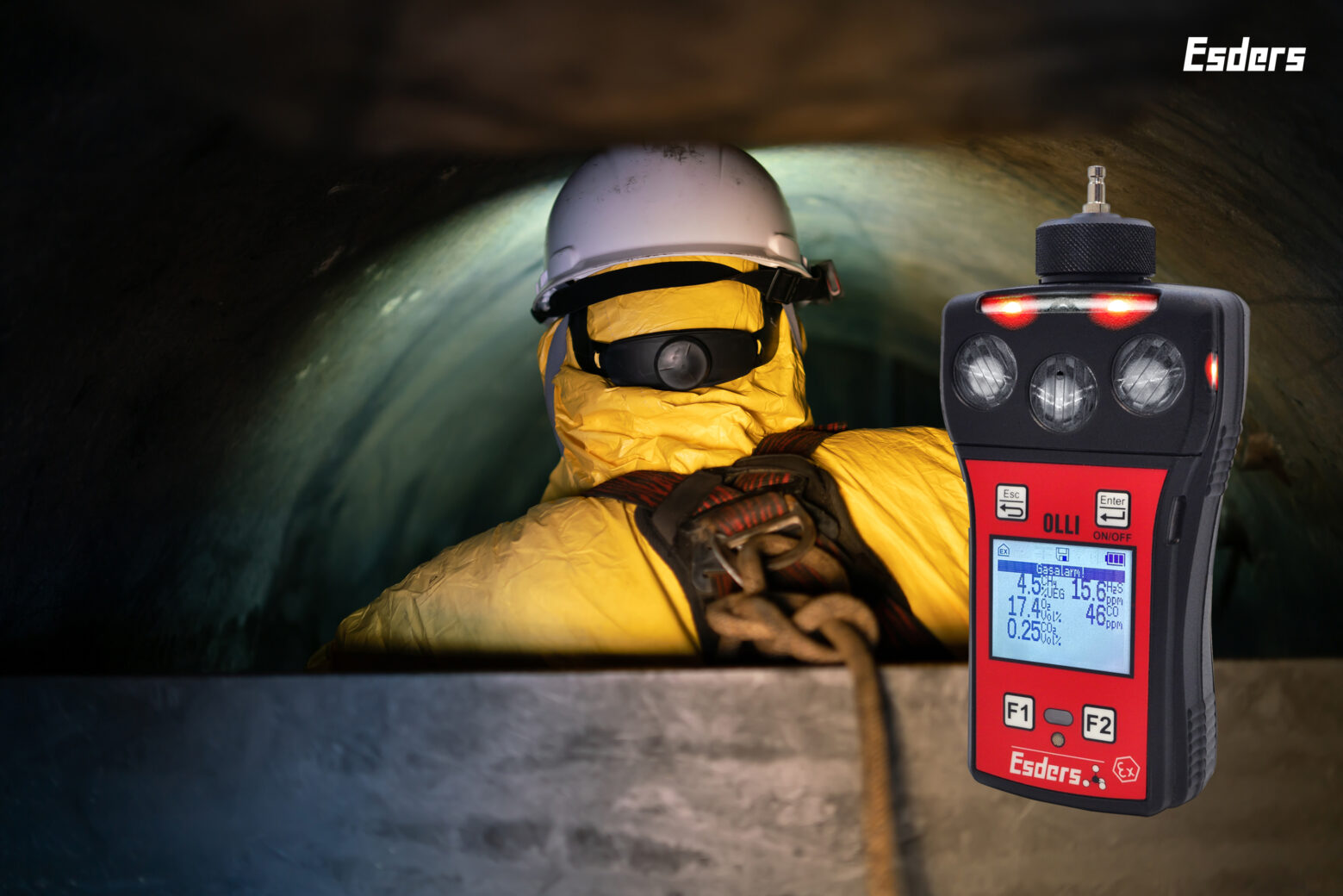Table of Contents
Oxygen (Ox) is, along with nitrogen, the main component of unpolluted ambient air in near-ground layers of the atmosphere and is necessary for the respiration of living organisms. It is thus one of the foundations of our lives. The oxygen content of the air is about 20.9 vol.%. 78 vol.% is nitrogen and the rest are other gases. About 400 ppm or 0.04 vol.% of this is CO₂.
Hazards due to foreign gases
Whenever the ambient air is polluted by foreign gases, there is a risk that oxygen is displaced and respiration is affected. This can be the case in poorly ventilated spaces due to too much CO₂ (e.g. through exhalation), as well as in containers, silos, tanks, shafts and other confined spaces due to flammable or toxic gases.
The danger of oxygen deficiency begins at an oxygen content of about 17 vol.%. If the concentration continues to drop, this manifests itself in an unnoticed reduction in physical and mental performance and, at less than 10 vol.%, leads to unconsciousness.
Toxic gases (Tox)
Toxic gases (or vapours) are gases that are harmful to human health, e.g. because they can be carcinogenic, affect breathing or the central nervous system and can be life-threatening or even fatal within a short time. Some flammable gases are also classified as toxic and vice versa, e.g. benzene.
Common toxic gases are:
Carbon monoxide (CO)
Carbon dioxide (CO₂)
Hydrogen sulphide (H₂S)
Formation and sources of toxic gases
- Incomplete combustion
- Organisms and living things
- Decay and putrefaction processes

Effects of toxic gases
Carbon monoxide is formed during incomplete combustion of carbon-containing substances, e.g. natural gas (methane), heating oil, coal and wood, when there is too little air and thus oxygen. When inhaled, it can cause nausea, dizziness or headaches, and at higher concentrations it can lead to asphyxiation.
However, with complete combustion, i.e. a suitable ratio of fuel gas and air, the carbon is converted into CO₂. CO₂ is also produced during cellular respiration of organisms and living things (exhalation by humans) and as a result of bacterial fermentation, putrefaction and decomposition processes, e.g. in biogas plants or sewage treatment plants and landfills (sewage gas or landfill gas). An increased concentration of about 3 vol.% in the ambient air can cause headaches and tiredness in humans.
At the beginning of the coronavirus pandemic, the German Federal Environmental Agency recommended monitoring the CO₂ concentration indoors to reduce the risk of contracting the virus through aerosols. CO₂ gas indicators or mobile gas detectors such as our OLLI with certified measuring function can be used for this purpose.
Hydrogen sulphide is – just like CO – a highly toxic gas that can be perceived through the nose even in extremely low concentrations. Its characteristic, acrid and rotten-egg stench makes it easily recognisable. However, it numbs the olfactory receptors already at a concentration of about 200 ppm, so that the perception of smell is absent. This makes people think they are safe, but without suitable aids, such as gas detectors, they are not. H₂S is also produced during the decomposition of biomass through rotting or decomposition processes. Landfills, biogas plants and sewage shafts are typical places where H2S occurs.
In addition, there are several other toxic gases, e.g. sulphur dioxide (SO₂) and nitrogen dioxide (NO₂), which occur in industrial processes.
Hazard prevention and protective measures
Due to their different hazard potentials, so-called workplace limit values (AGW) or maximum workplace concentrations (MAK) have been defined for a whole range of toxic gases. The following values are specified in TRGS 900 (Technical Rules for Hazardous Substances):
- CO: 30 ppm
- CO₂: 5000 ppm or 0.5 vol.%
- H₂S: 5 ppm
Clearance measurement and safety measures
In the containers mentioned at the beginning, a lack of oxygen cannot be ruled out due to the frequent presence of methane, CO₂ or H₂S. Therefore, it is necessary to carry out a clearance measurement before entering to ensure that there is no polluted atmosphere. If it is nevertheless present, access to the container, tank or shaft is not permitted and suitable measures (e.g. flushing) must be initiated.
In our gas detector OLLI, the clearance measurement is provided for the monitoring workspace application.
We have a sample offer for you here for the OLLI clearance measurement set, download now and view the full set.

